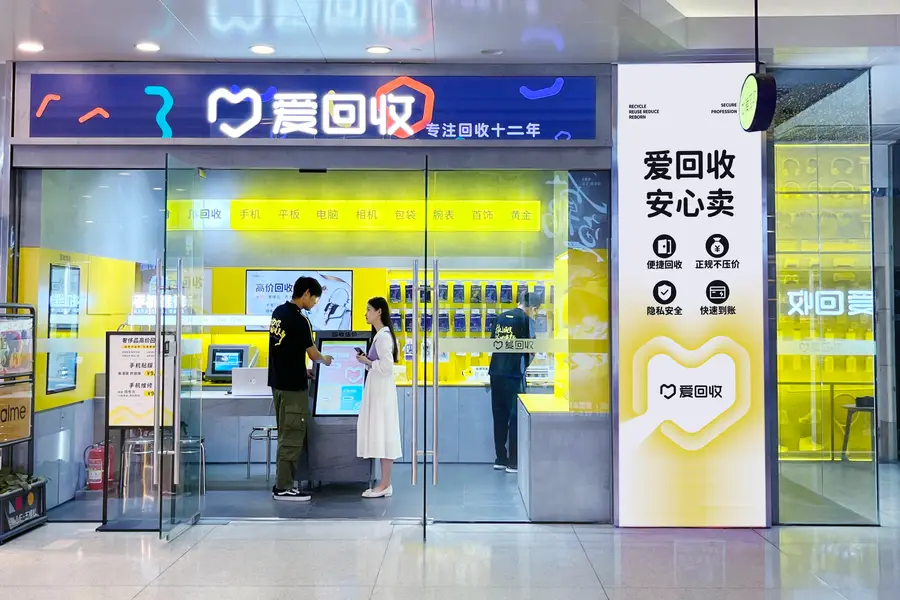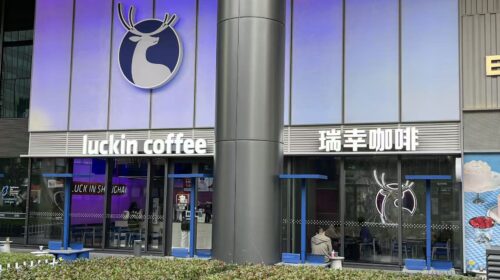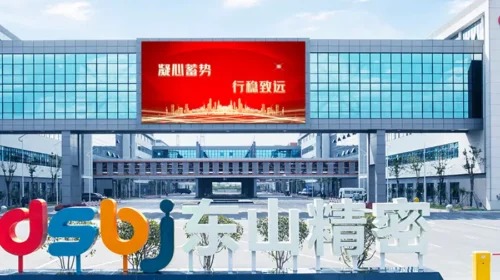ATRenew ups ESG commitment with ambitious carbon-reduction goals

The company boosted sales of pre-owned products last year, leading to a 26% increase in its annual revenue
Key Takeaways:
- ATRenew handled sales of more than 35.3 million pre-owned smartphones and other products last year, up from 32.3 million in 2023
- The company also set ambitious emissions reduction goals, aiming to cut Scope 1 and 2 emissions by 35% and Scope 3 emission by 50% by 2030 from 2024 levels
By Warren Yang
In the environmental, social and governance (ESG) universe, ATRenew Inc. (RERE.US) by default is in a sweet spot. As a recycling specialist, it can contribute to pollution reductions, the “E” in ESG, simply by growing its business. The company’s latest annual update on its ESG performance shows how it is doing just that, and helping to make the environment greener in the process.
The company handled sales of more than 35.3 million pre-owned products last year, up from 32.3 million in 2023, which underpinned a 26% increase in its revenue to 16.3 billion yuan ($2.3 billion) for 2024. The company noted that its new “multi-category” strategy of expanding the types of products it recycles, initiated in 2022, gained “significant momentum” last year, with the number of its multi-category recycling stores more than doubling.
The multi-category segment supplements ATRenew’s traditional focus on electronics recycling by moving it into other consumer goods like designer handbags, gold and even vintage liquors that might otherwise end up in landfills.
ATRenew also expanded its trade-in services, in line with a national program to boost consumption by encouraging the replacement of old devices with new ones through subsidies and other incentives. By the end of last year, the company had more than 1,800 offline stores across China, and more than 650 offering multi-category recycling services.
Technology is undoubtedly an important enabler for the company. In particular, it uses artificial intelligence (AI) to inspect second-hand products to streamline its operations and ensure more consistent results.
Recycling is crucial for environmental protection for a number of reasons. Take mobile phones, ATRenew’s core product, for example. Those gadgets contain a lot of chemicals, so improper disposal can release those harmful substances into the environment.
Throwing used phones away also means people need to buy new ones, requiring large consumption of resources like rare earth elements, whose short supply is currently roiling world markets. Mining such minerals is also environmentally taxing as it causes deforestation and water pollution during production. What’s more, making and shipping new phones leads to the release of greenhouse gases, the main culprit behind global warming and climate change.
Back in 2022, the Waste Electrical and Electronic Equipment (WEEE) forum estimated that about 5.3 billion smartphones would be discarded that year, equal to almost one-third of the total number of smartphones people owned at that time. While there’s no readily available newer data, the disposal of mobile phones has likely grown, since the recycling rates for electronic devices in general are quite low. According to a separate projection also from 2022, the number of scrapped smartphones in China alone would hit 6 billion by this year as less than 2% of such devices were being recycled.
Abandoned smartphones are just one part of swelling electronic waste, or e-waste. One estimate puts the total annual volume of e-waste at some 40 million tons, with just about 12.5% of such waste being recycled. The rest is sent to landfills or burned, detrimental to the environment either way.
E-waste
E-waste management is another area where ATRenew is contributing to the “E” part of the ESG equation. The company says it reduced e-waste pollution by 21.9 tons last year, up from 17.8 tons in 2023, by disposing of 137,000 units of electronics in eco-friendly ways.
On top of such achievements, ATRenew is proactively striving to cut its own carbon footprint, another key part of getting the “E” of ESG right.
It set an ambitious target to reduce the intensity, or the amount of greenhouse gases emitted per unit of economic output or activity, of its so-called Scope 1 and 2 emissions by 35% by 2030 from the 2024 level. ATRenew currently doesn’t produce any Scope 1 carbon dioxide emissions, or emissions that originate from sources owned or controlled by it under the Greenhouse Gas Protocol. So practically, it’s looking to significantly cut Scope 2 emissions from purchased electricity.
It also aims to halve the figure for its Scope 3 emissions by 2030 using 2024 as the baseline. Such emissions indirectly stem from various sources, such as use of transportation for purposes like distribution and employee commuting.
These goals are part of the company’s broader efforts to reach peak carbon emissions by 2030 and achieve carbon neutrality in the following three decades, in line with Beijing’s objectives for the entire nation. While achieving these reductions may present challenges, ATRenew continues to focus on improving energy efficiency through technology. Although the company successfully lowered its Scope 2 emission intensity from 0.30 in 2022 to 0.28 in 2023, we note that the figure subsequently increased to 0.31 last year. Maintaining a downward trajectory over the next five years will require sustained commitment to meet the company’s Scope 2 emission-reduction target.
Still, ATRenew’s environmental commitment is rather clear. Just the fact that it continues to disclose its Scope 3 emissions speaks volumes. Such data is complicated and tedious to assemble as it involves tracking and estimating emissions from a wide variety of sources, so not many companies are willing to deal with the hassle. The U.S. Securities and Exchange Commission (SEC) included mandatory disclosure of Scope 3 emissions in its original proposal for climate disclosure requirements two years ago. But many companies protested the idea, leading the SEC to ultimately exclude it from its final rules.
ATRenew is working to improve the other areas of ESG as well, with its risk management committee proactively identifying potential mishaps, among other measures.
In recognition of these efforts, S&P Global’s Corporate Sustainability Assessment raised the company’s ESG score to 35 last year from 33 in 2023, putting it among the top 7% of retail technology service providers globally.
ATRenew shares have risen nearly 70% in the past year, though their price-to-sales (P/S) ratio is still far below 1, a level above which reflects a certain level of investor optimism. But if it continues to show that the good things it does for the environment can pay off financially as well, it may only be a matter of time before investors give it more credit, especially as China sticks to its climate commitment, unfazed by a retreat in the U.S. under Donald Trump.
The Bamboo Works offers a wide-ranging mix of coverage on U.S.- and Hong Kong-listed Chinese companies, including some sponsored content. For additional queries, including questions on individual articles, please contact us by clicking here
To subscribe to Bamboo Works free weekly newsletter, click here





